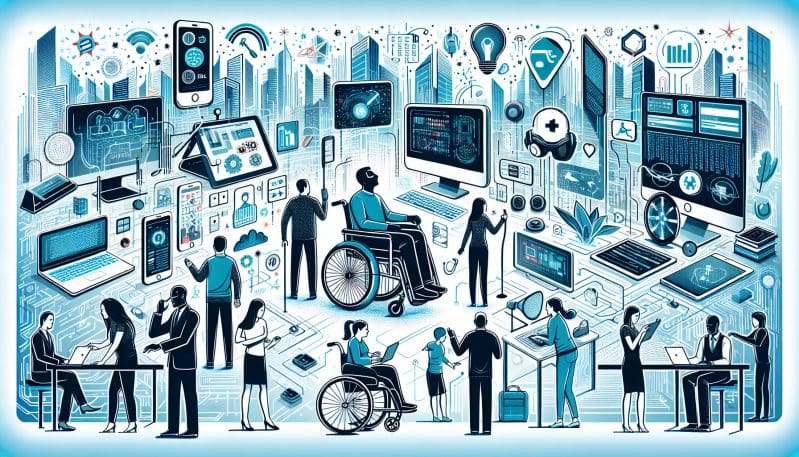Redefining Accessibility: Integrating Disability Inclusivity into Brand Identity in the Technological Future of Work
- Home
- Redefining Accessibility: Integrating Disability Inclusivity into Brand Identity in the Technological Future of Work

- Editors Desk
- January 17, 2024
- 0 Comments
As we stand on the cusp of a future where technology increasingly intersects with every aspect of work, a critical narrative is emerging, one that champions both innovation and inclusivity. This narrative is not just about adhering to regulations; it’s about weaving the threads of disability rights and inclusion into the very fabric of a company’s identity. ‘No Worker Left Behind’ embodies this call to action, challenging businesses to evolve their brand strategies to mirror an inclusive economy and workplace, where diversity is not an afterthought but a keynote of brand ethos.
The rise of adaptive technologies and artificial intelligence offers an unprecedented opportunity for businesses to build a brand synonymous with diversity and accessibility. By harnessing these tools, companies can create products, services, and environments that are inherently inclusive, thereby establishing a brand image that resonates with the principles of equal opportunity and empowerment for all, regardless of ability.
Success stories abound, from tech giants that have made accessibility a pillar of their design process, to startups whose very mission is predicated on inclusivity. These pioneers have not only reaped the rewards of a broader consumer base but have set a precedent in their industries, demonstrating that fully embracing disability inclusivity within a brand is not only the right thing to do but also a savvy business strategy. Their reputations have flourished in the technology-led economy, setting them apart as leaders in diversity and innovation.
The strategic imperatives for incorporating disability inclusivity into branding are manifold. It involves a commitment to ongoing dialogue with disabled communities, investment in R&D for accessible products, and a dedication to fostering a company culture that celebrates and supports diversity. This dedication not only attracts a wide range of talent but also engenders an environment where workers, regardless of ability, feel genuinely valued and able to contribute fully.
In conclusion, the integration of disability inclusivity into brand identity is far from a mere exercise in corporate social responsibility. It is a forward-thinking imperative for any business that aspires to lead in the technological future of work. By embracing this ethos, companies can not only anticipate the needs of a diverse workforce but can also inspire a more inclusive society, demonstrating that in a world of rapid change, no worker should be left behind.

Leave A Comment